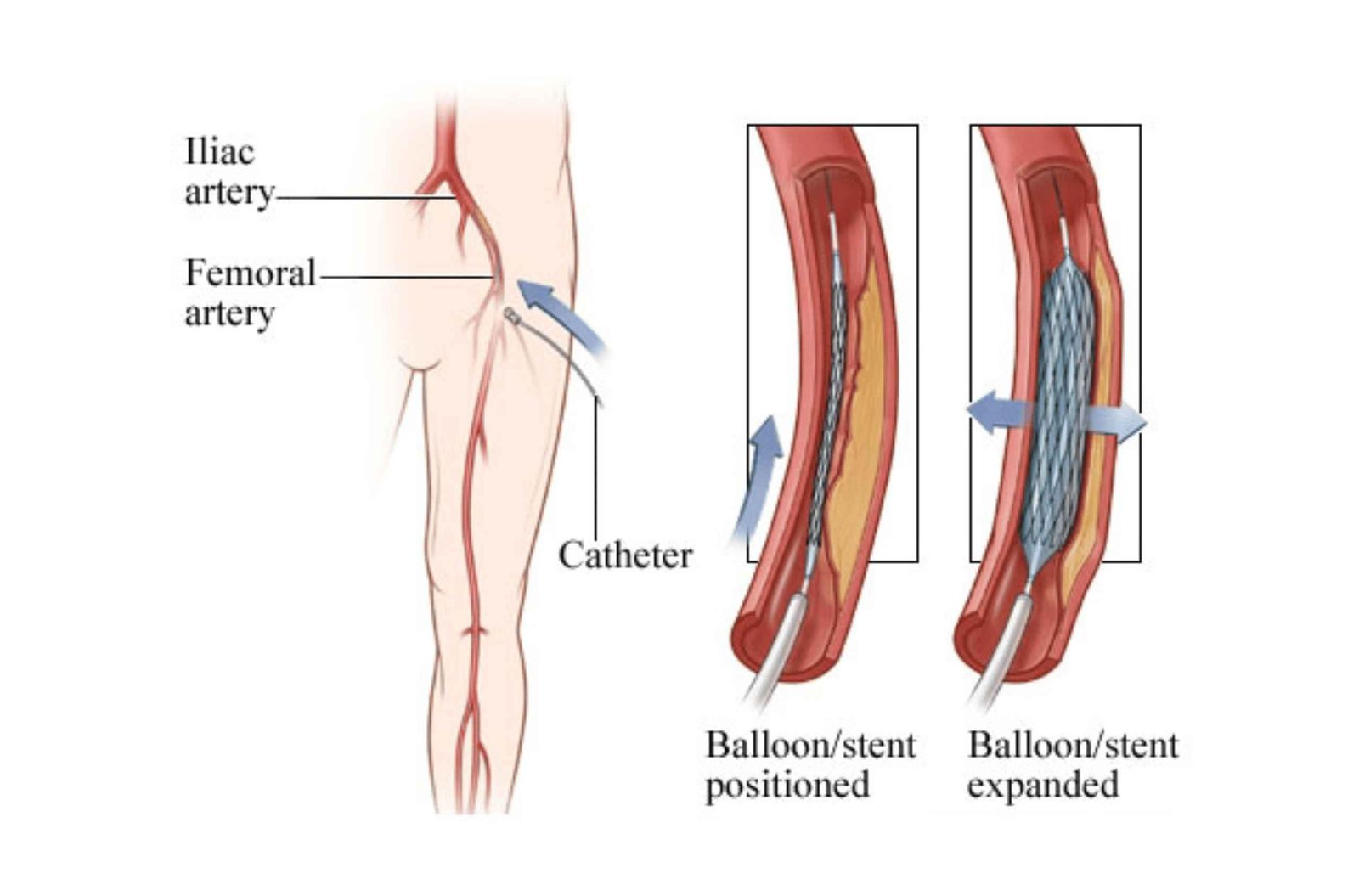
Peripheral angioplasty is a minimally invasive procedure used to open blocked or narrowed arteries in areas outside the heart and brain, most commonly in the legs, arms, and pelvis. This procedure helps restore adequate blood flow to the affected areas, alleviating symptoms and reducing the risk of serious complications associated with peripheral artery disease (PAD).
Peripheral angioplasty involves the use of a balloon catheter to widen the narrowed or blocked sections of an artery. Often, a stent (a small mesh tube) is placed in the artery to keep it open and maintain adequate blood flow. This procedure is especially beneficial for patients experiencing symptoms such as leg pain while walking, non-healing wounds, or other signs of reduced blood circulation.
Peripheral angioplasty is performed to:
The procedure is usually performed in a hospital or specialized outpatient facility and involves the following steps:
The entire procedure typically takes between 1 to 2 hours, and patients are usually monitored for a few hours afterwards to ensure there are no complications.
Peripheral angioplasty offers several important benefits:
After the procedure, patients are usually advised to rest for a few hours to allow the incision site to heal. It is important to:
Peripheral angioplasty is a valuable treatment option for patients with peripheral artery disease, offering a minimally invasive way to restore blood flow and alleviate symptoms. By widening blocked or narrowed arteries and often placing a stent, this procedure provides immediate and long-lasting benefits. If you are experiencing symptoms of PAD, consult with your healthcare provider to determine if peripheral angioplasty is the right treatment for you.
Peripheral angioplasty is a minimally invasive procedure used to open blocked or narrowed arteries outside the heart and brain, most commonly in the legs, arms, and pelvis. It involves inflating a small balloon inside the artery to widen it and improve blood flow, often with the placement of a stent to keep the artery open.
Peripheral angioplasty is recommended for patients with peripheral artery disease (PAD) who experience symptoms such as leg pain while walking (claudication), non-healing wounds, or other signs of reduced blood flow. The procedure helps to alleviate symptoms, promote healing, and prevent complications such as gangrene or amputation.
Preparation may include:
During the procedure:
The procedure usually takes 1-2 hours.
The procedure itself is not typically painful due to the use of local anesthesia. You may feel some pressure when the catheter is inserted and the balloon is inflated. Mild discomfort at the incision site after the procedure is common, but this usually subsides quickly.
While generally safe, risks include:
Recovery time is usually short. Most patients can return to normal activities within a few days, although you should avoid strenuous activities and follow your doctor’s specific instructions. It is important to monitor the insertion site and stay hydrated.
Many patients are able to go home the same day, but some may need to stay overnight for observation, especially if there are complications or if the procedure was particularly complex. Your doctor will advise you based on your individual circumstances.
Peripheral angioplasty is highly effective in improving blood flow and relieving symptoms associated with PAD. The placement of a stent can provide long-lasting results, though in some cases, the artery may narrow again over time, requiring repeat procedures.
After the procedure, you should: